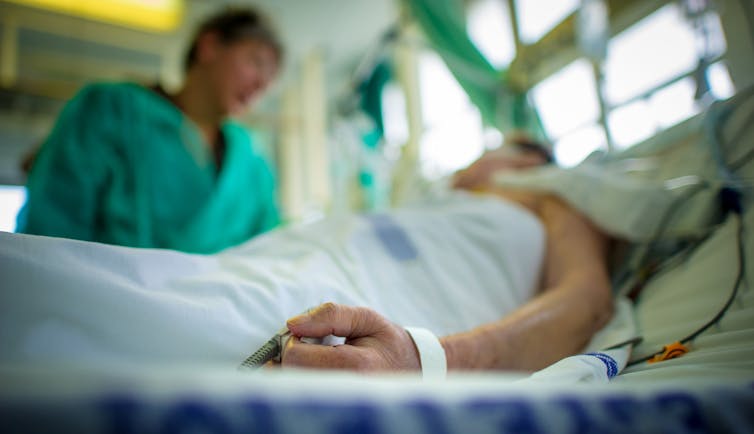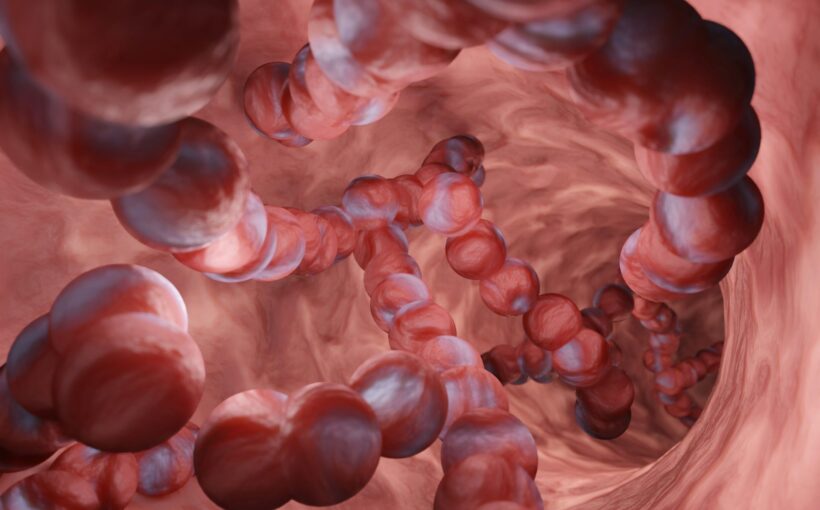
There has been a sharp increase in the number of people in Japan suffering with the rare but dangerous bacterial condition, streptococcal toxic shock syndrome (STSS). According to reports, cases of this potentially fatal strep A illness have more than tripled in Tokyo compared with this time last year.
While experts aren’t entirely certain why cases have risen so sharply to record levels, many believe it could be due to people being less vigilant about protecting themselves from infection after COVID measures were dropped.
Many countries, including the UK, have seen a similar increase in illnesses caused by strep A bacteria in the post-lockdown period – highlighting the continued burden that these bacteria have on public health.
Group A strep
STSS is caused by group A streptococcal bacteria, whch are quite common. Between 5% and 20% of healthy adults have these bacteria living inside them without any symptoms. But even when they don’t cause illness, group A streptococcal bacteria can still be spread to other people unknowingly through touch, coughs and sneezes.
Strep A bacteria are commonly spread through close contact with an infected person. This means that people who spend time in crowded places – such as schools or dormitories – may be at greater risk of catching these bacteria. Even people who aren’t ill can be colonised by them, as they are well adapted to grow in healthy human hosts.
But strep A bacteria can shift gears from being symptom-free and harmless into the source of numerous diseases. Infection may be triggered by larger numbers of the bacteria, mutation to a more aggressive strain, or perhaps some reduction in host defences. Most often, this will cause localised, short-lived infections – such as strep throat, tonsillitis or impetigo on the skin.
However, strep A bacteria can also ambush patients a few weeks after these milder infections, causing severe, lifelong complications – including rheumatic heart fever or inflammation of the kidneys. These complications are more common in certain populations, such as those who are homeless or living in poverty, or people with drug and alcohol use problems.
Strep A bacteria can also cause more severe illnesses, including scarlet fever, sinusitis, pneumonia, cellulitis, bone and blood infections.
In rare cases, strep A bacteria can spread from cuts and wounds deep into soft tissues and muscle, leading to necrotising fasciitis or “flesh-eating disease”. And streptococci can in some situations release immune-activating toxins that activate the immune cells in tissues, triggering STSS.
Toxic shock
STSS patients often complain initially of fevers, muscle aches and nausea, before becoming confused or drowsy. Low blood pressure follows, leading to cold hands and feet, a rapid heart rate and breathing too. Without the blood pressure they need to function, organs then begin to fail, usually 24 to 48 hours after the symptoms emerged.
STSS has a high mortality rate – ranging from 5% in younger patients who have been admitted quickly to intensive care, to up to 70% in the elderly.

Treatment for suspected STSS should be delivered as rapidly as possible. Patients will require oxygen, intravenous fluids and even cardiac support, alongside antibiotics and intravenous immune antibodies to deactivate strep A toxins. Even if referral and treatment is given quickly, it may still take patients many weeks to recover from the physical effects.
STSS is more common in people who have a poor immune system– including the elderly, people taking steroid medications, people recovering from a recent illness (particularly chickenpox), those with type 2 diabetes, and people with drug and alcohol problems. The elderly are a large and growing component of Japan’s population, which may explain why cases of STSS are particularly high there.
The rise in STSS cases is probably also a consequence of fewer COVID restrictions in this post-lockdown period. Public health measures such as mask wearing, washing and disinfecting hands and social distancing all helped to reduce the spread of strep A bacteria. People were exposed to larger numbers of bacteria when these controls were lifted.
Fortunately, strep A bacteria remain responsive to penicillin, although resistance has been identified in some strains. This means that strep A – and STSS – remain treatable.
Researchers are also working on developing a protective vaccine against strep A bacteria. If successful, this would not only protect against milder illnesses caused by streptococci, but also against rheumatic fever and perhaps the more acute severe illnesses such as STSS.
Strep A bacteria are estimated to contribute to more than half a million deaths globally each year. While relatively few of these are the consequence of STSS, this number highlights a need to better monitor group A streptococci, their evolution and the diseases they cause.
Protecting yourself against strep A bacteria remains relatively simple. Many of the practices we followed during the height of the pandemic – such as wearing masks, washing hands and avoiding crowds – can help us avoid strep A too.
![]()
Colin Michie does not work for, consult, own shares in or receive funding from any company or organisation that would benefit from this article, and has disclosed no relevant affiliations beyond their academic appointment.



